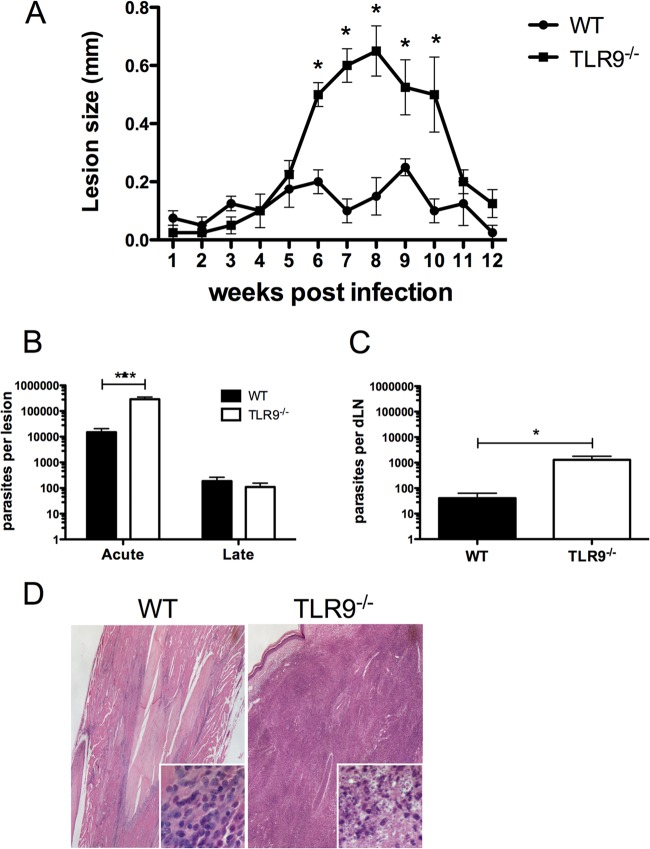Fig 2.
Increased susceptibility and parasitemia of TLR9−/− mice infected with L. braziliensis. TLR9−/− mice and WT mice were injected in the hind footpad subcutaneously with stationary-phase L. braziliensis promastigotes. (A) Lesion sizes were monitored weekly with a caliper. (B) At 6 (acute) and 12 (late) weeks p.i., mice were sacrificed and footpad parasite loads were determined by LDA. Data shown are results pooled from 3 independent experiments and presented as means + SEM (n > 12 mice per group). (C) At the acute time point p.i., dLN parasite loads were determined by LDA; data are results pooled from two independent experiments (n > 7 mice per group). Data are presented as means + SEM. ***, P < 0.0005; *, P < 0.05 (Student's t test comparing TLR9−/− mice to control mice). (D) Histological analysis of footpad lesion by hematoxylin and eosin staining at a magnification of ×40, with insets at a magnification of ×400.

